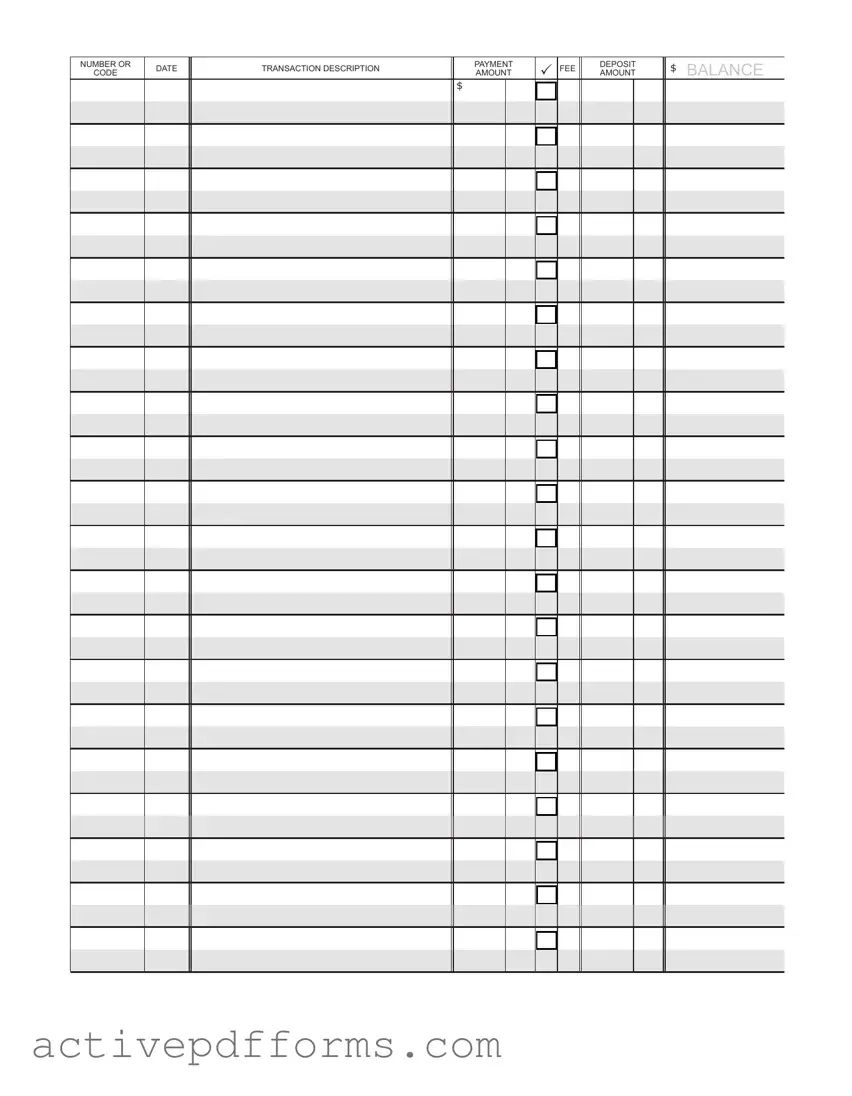Free Check Register PDF Template
A Check Register form is a document used to record all transactions for a checking account, including deposits, withdrawals, checks written, and any fees incurred. It serves as a personal record-keeping tool for individuals to track their finances and ensure accuracy in their account balances. This essential financial instrument aids in managing personal finance with precision and responsibility.
Edit Check Register Now
